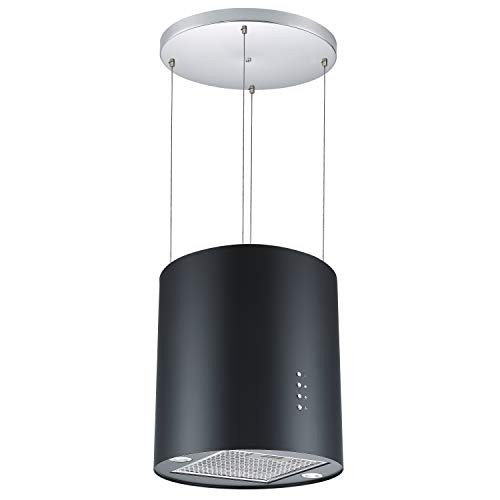Why No One Cares About Kitchen Extractor Hood

The Essential Guide to Kitchen Extractor Hoods: Choosing, Installing, and Maintaining
In modern kitchens, extractor hoods are important for both functionality and visual appeals. They not only improve the total design of the area but also play an essential role in preserving a healthy cooking environment. This blog post aims to provide detailed info about kitchen extractor hoods, including types, advantages, setup tips, maintenance, and answers to frequently asked questions.
What is a Kitchen Extractor Hood?
A kitchen extractor hood, also understood as a range hood or vent hood, is a gadget installed above cooking surface areas that captures airborne grease, vapors, smoke, heat, and smells. By efficiently removing these elements from the air, extractor hoods help enhance indoor air quality and reduce the threat of fire hazards.
Types of Kitchen Extractor Hoods
When selecting an extractor hood, homeowners typically have 4 primary types to think about:
| Type | Description | Pros | Cons |
|---|---|---|---|
| Wall-Mounted | Mounted on the wall above the cooking surface. | Classy style, space-saving alternatives, effective suction. | Needs adequate wall space; installation may be challenging. |
| Island | Suspended from the ceiling above an island or peninsula kitchen. | Provides a significant focal point, perfect for open kitchens. | Can be pricey, needs mindful planning for ductwork. |
| Under-Cabinet | Fits underneath kitchen cabinets straight above the stovetop. | Discreet, space-efficient, and easy to set up. | May have less suction power than other types. |
| Downdraft | Integrated into the countertop and increases when needed. | Inconspicuous, perfect for modern styles. | Generally more costly; less reliable for larger cooking surface areas. |
Benefits of Installing a Kitchen Extractor Hood
Investing in a kitchen extractor hood includes a myriad of advantages:
- Air Quality Improvement: Eliminating smoke, grease, and smells keeps a tidy and healthy environment.
- Comfort: Reduces humidity and heat in the kitchen, making cooking a more pleasurable experience.
- Fire Safety: Proper ventilation helps minimize the risk of fire triggered by grease buildup.
- Device Longevity: Reduces the accumulation of dirt and grease on kitchen devices and surfaces, extending their life.
- Enhancing Kitchen Aesthetics: Many modern hoods come in elegant styles that can serve as decorative aspects in the kitchen.
Choosing the Right Extractor Hood
When choosing the proper extractor hood, think about the following factors:
1. Size
The width of the hood need to at least match the width of your cooking surface. For maximum performance, think about a hood that extends 3 inches broader on either side if space enables.
2. Suction Power (CFM)
CFM, or cubic feet per minute, suggests the air flow ability of the hood. A higher CFM is more effective for gas ranges and bigger cooking surface areas.
| Cooking Surface Type | Suggested CFM |
|---|---|
| Electric Range | 200-400 CFM |
| Gas Range | 300-600 CFM |
| Heavy Cooking (stir fry, deep frying) | 600+ CFM |
3. Ducted vs. Ductless
- Ducted: Ventilate air outside; more reliable at getting rid of heat and odors.
- Ductless: Circulates air back into the kitchen with filters; simpler to install, but less effective.
4. Noise Level
Examine the noise level scores, generally measured in sones. A quieter system can boost your cooking experience.
5. Design and Finish
Pick a style that matches your kitchen decor. Options include stainless-steel, glass, and custom cabinetry designs.
Installation Tips for Kitchen Extractor Hoods
When setting up kitchen extractor hoods, it’s vital to think about a number of essential points to guarantee ideal performance and safety.
- Height: For the majority of range hoods, the setup height need to be between 24 and 36 inches above cooking surface areas.
- Electrical Work: Ensure that all electrical connections are up to code. Consider employing a certified electrical contractor if not sure.
- Ductwork: If you choose for ducted hoods, quality ductwork is important for maximum performance. Prevent sharp bends that can impede airflow.
- Expert Help: If you’re unskilled with DIY tasks, think about employing experts for installation to avoid harmful your kitchen or brand-new hood.
Upkeep of Kitchen Extractor Hoods
Routine maintenance is vital for keeping an extractor hood operating efficiently. Here are some suggestions:
- Clean Filters: Depending on usage, wash grease filters every 1-3 months. A dishwasher may be used for metal filters; paper filters should be replaced.
- Clean Down Surfaces: Clean the outside of the hood routinely with warm soapy water to maintain its appearance and functionality.
- Examine Ductwork for Blockages: Periodically examine ductwork for any obstructions or signs of grease buildup.
Often Asked Questions (FAQs)
1. How frequently should I utilize my extractor hood when cooking?
It’s suggested to switch on the extractor hood when you begin cooking, so it can capture smoke and odors from the very start. Keep it on for numerous minutes after cooking to clear out recurring smells.
2. Can I set up an extractor hood myself?
While some individuals can DIY installations, it’s often best to employ a professional. Appropriate installation is essential for performance and safety.
3. What occurs if I do not have an extractor hood?
Cooking without correct ventilation can cause bad air quality, increased humidity, and a greater threat of fire hazards due to grease accumulation.
4. For how long should I leave my hood on after cooking?
Keeping the hood on for 5-10 minutes after cooking is normally enough to aerate the kitchen efficiently.
5. Exist energy-efficient choices available?
Yes, many modern extractor hoods include energy-efficient motors and LED lighting, substantially decreasing energy intake while maintaining efficiency.
Selecting, installing, and keeping a kitchen extractor hood is vital for a safe and pleasant cooking experience. With numerous choices to fit various kitchen layouts and designs, there’s an ideal extractor hood for every single home. Remember to consider key elements such as size, suction power, and maintenance requirements before making your purchase. A well-chosen and kept extractor hood will not just enhance your cooking environment however likewise boost the general aesthetic of your kitchen.


